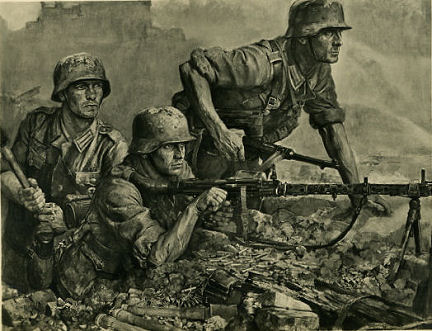M45
Well-known member
Russ Hamilton Steel Helmet Collection: The collection of the pioneering steel helmet collector Russ Hamilton, who died 20 April 2021 will be displayed in this section. The helmets will be photographed and added gradually. Certain helmets will be offered for sale and those will be listed in the For Sale section. Unavailable helmets will be displayed in the Russ Hamilton Steel Helmet SOLD section for the enjoyment of the collecting community.
Heer M35 double decal tricolor spray camouflaged helmet, incredibly attractive example with intact decals, the base apple green paint was over sprayed in a base tan color to which dark green and red brown colors were added, the outline of the decals is clearly visible and, upon close inspection, the contours of the Heer eagle and national color shield may be discerned, a good deal of paint remains to pins and vents, there is wear to shell's lower edges as well as some scratches and gouges to the paint, internally there is a dome stamp with 1937 date, shell is embossed Q60 and the lot number is 148, with unreinforced aluminum liner bands, pins have not been disturbed and all washers are in place, the leather liner with its string is stamped size 53, the chinstrap is marked to a Berlin manufacturer and dated 1937, the buckle end has two staples holding it together, a separate undamaged replacement buckle is included, great looking example, USD $4500 HOLD
Heer M35 double decal tricolor spray camouflaged helmet, incredibly attractive example with intact decals, the base apple green paint was over sprayed in a base tan color to which dark green and red brown colors were added, the outline of the decals is clearly visible and, upon close inspection, the contours of the Heer eagle and national color shield may be discerned, a good deal of paint remains to pins and vents, there is wear to shell's lower edges as well as some scratches and gouges to the paint, internally there is a dome stamp with 1937 date, shell is embossed Q60 and the lot number is 148, with unreinforced aluminum liner bands, pins have not been disturbed and all washers are in place, the leather liner with its string is stamped size 53, the chinstrap is marked to a Berlin manufacturer and dated 1937, the buckle end has two staples holding it together, a separate undamaged replacement buckle is included, great looking example, USD $4500 HOLD























































